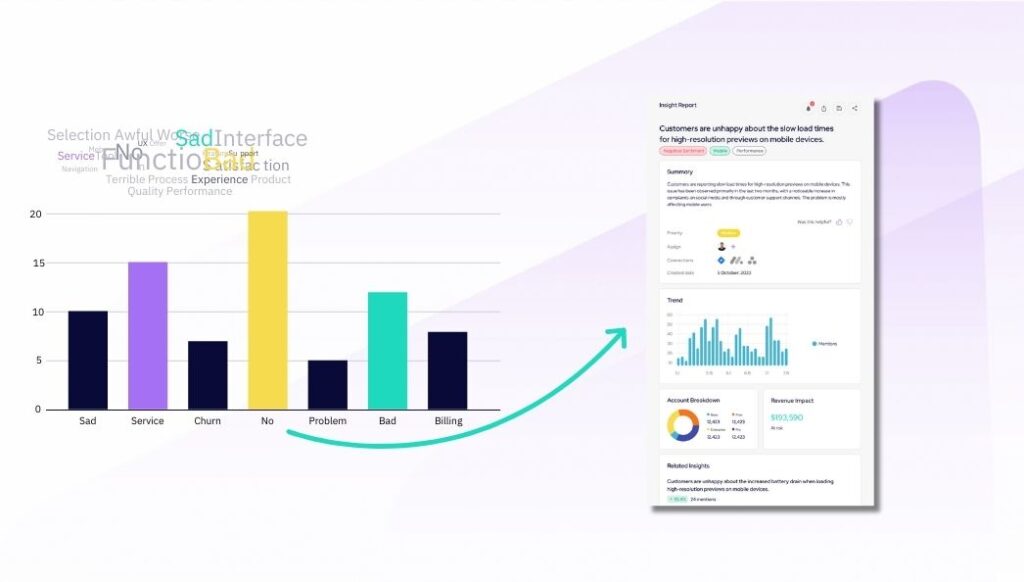When understanding the performance of a business, the level of customer satisfaction holds immense significance. This is because the continued existence of any business hinges greatly upon the contentment of its customer base. Understanding the extent of customer happiness has therefore, unsurprisingly, become a key pursuit for organizations. To achieve this many have embraced the Net Promoter Score, commonly referred to as NPS, as a key metric for assessing customer sentiment.
The Limitations of NPS
While this single metric can provide an overview of general customer sentiment, NPS fails to identify the factors behind that sentiment. Its narrow focus does not shed light on crucial aspects, such as which products resonate most with customers, their interaction with various channels throughout their journey, and the reasons some experiences lead to feedback instead of referrals. It therefore cannot deliver the actionable insights needed to improve specific areas of the customer experience.
So, while NPS has enjoyed widespread use for measuring customer loyalty, its standardized approach sometimes falls short in revealing the driving forces behind customer sentiment.
How to Unlock the Secrets Hidden Behind NPS
NPS gives us a positive or negative metric regarding how happy our customers are to recommend our products and company. But to understand why and what actions we need to take to improve it, we need to dive into customer feedback. Making CX data analysis a priority, however, is easier said than done, with the majority of executives reporting their biggest barrier to leveraging customer feedback is the fact it is fragmented or siloed, according to Treasure Data.
The problem is that CX feedback is a mountain of unfiltered and untagged text, and analyzing this vast amount of text can be an overwhelming task. To overcome this, companies need to transform quantitative CX data into qualitative CX data.
Achieving this is a struggle that up to now could only be solved by tedious manual analysis or integrating a stack of siloed solutions. And in most cases, after all this effort, organizations still end-up with generic customer insights that are simply not actionable.
The Solution: Using NLP Technology to Analyze CX Data
Natural Language Processing (NLP) is a branch of artificial intelligence or AI and uses algorithms to analyze text and spoken words in much the same way human beings can.
When NLP is paired with quantitative data, businesses can dig deep into the most comprehensive data sources to thoroughly understand customer sentiment across every part of their operations and offerings. This can encompass a wide range of inputs, from customer feedback in emails or social media posts to support tickets, all offering priceless perspectives on how customers perceive a company’s product or service.
Through the analysis of extensive datasets via NLP, these companies attain in-depth understanding of their customers’ needs, enabling precise actions. This unlocks entirely fresh avenues for business intelligence teams to make well-informed decisions that yield tangible outcomes for an organization.
Insights to Benefit Multiple Teams and Sectors
Most companies today have a set of tools in place to analyze their customer experience quantitative data. However, very few have advanced tools to analyze their qualitative data. Tagado can help bridge that gap to generate automated actionable insights that can be applied across your company teams.
The platform is powered by advanced NLP technology combined with machine learning models that constantly feed and learn from your users’ behavior to improve accuracy and better adapt to your company terminology.
Tagado can be leveraged across organizations, from product managers, customer experience managers, customer success managers, the voice of the customer, QA teams, data analysts, UI/UX designers, and business operations. This can add immense value across multiple sectors, such as marketplaces (e-Commerce, Travel and Leisure, Education, Services, Media and Internet) and financial services (Banking, Insurance, Investment houses, Stock Market, etc).
Transcending the One-Dimensional NPS Metric
Organizations are doing a great job of understanding customer sentiment by measuring NPS. However, those that combine Tagado with their efforts will be able to make sense of the drivers behind their NPS to serve all teams with insights that will drive immediate action. This will transform their NPS and their understanding of customer sentiment from a one-dimensional score into multidimensional actionable insights.
With features ranging from automated tagging and trend recognition to streamlined data access and automated insight generation, Tagado’s platform presents a holistic solution that transcends the limitations of superficial NPS scores. Through the harnessing of AI and NLP capabilities, companies stand to achieve profound insights, data-driven decision-making, and substantial enhancements in customer satisfaction. By embracing Tagado’s customer intelligence capabilities today companies can instantly unlock the untapped potential of their NPS surveys.
Learn how Tagado can transform your NPS to deliver instantly actionable insights by booking a demo today.




